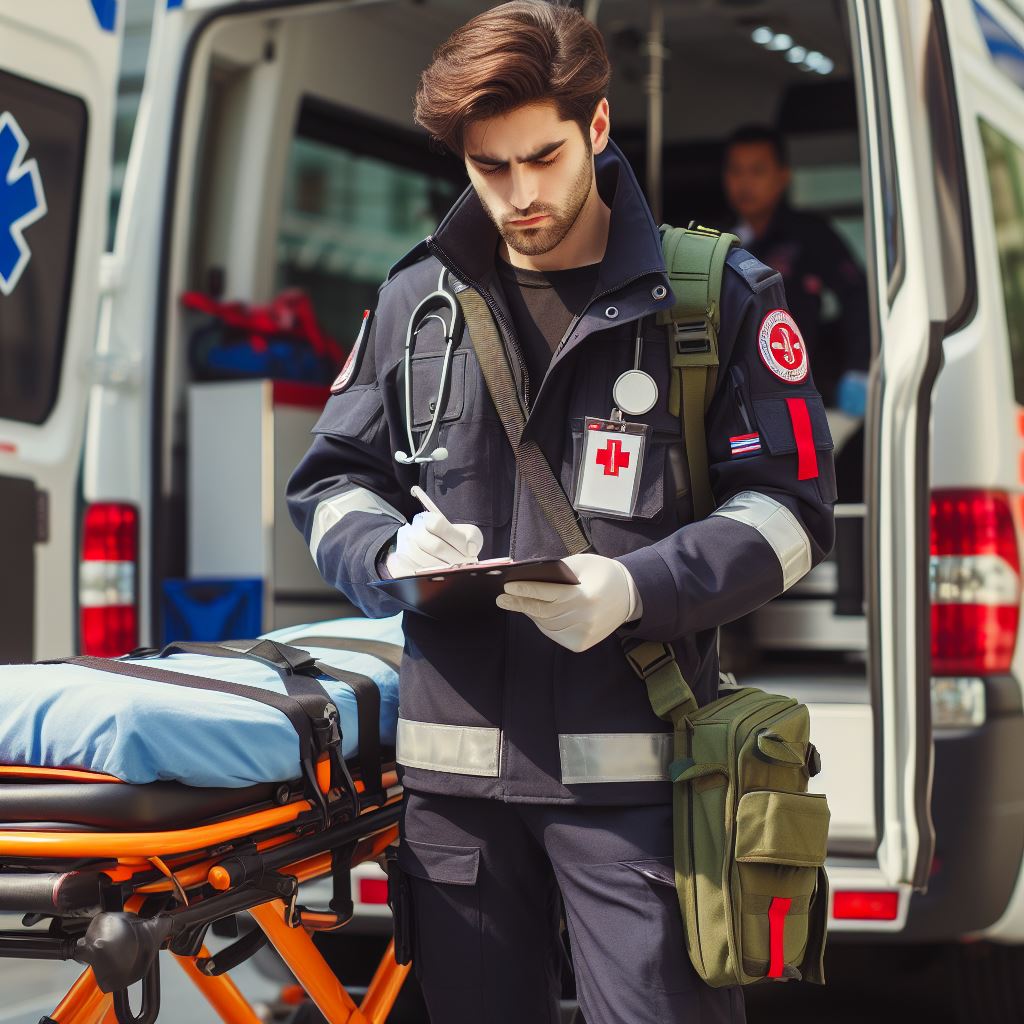 EMS professionals inhabit a unique role within the tapestry of healthcare — they are often the first faces seen in moments of crisis. As these skilled individuals step into scenes filled with uncertainty and distress, a display of sincere understanding, a comforting touch, or a reassuring word can transform the chilling experience of an emergency into one where warmth and hope prevail.
EMS professionals inhabit a unique role within the tapestry of healthcare — they are often the first faces seen in moments of crisis. As these skilled individuals step into scenes filled with uncertainty and distress, a display of sincere understanding, a comforting touch, or a reassuring word can transform the chilling experience of an emergency into one where warmth and hope prevail.
Any medical emergency can be traumatic emotionally and psychologically. Hence, while technical excellence in emergency interventions is non-negotiable, the capacity of EMS professionals to offer compassionate care can play an unsung, yet spectacular, role in a patient’s recovery trajectory.
Patient Empathy
Patient empathy digs deeper into the core of individual crises, allowing responders to anchor their actions in the understanding of each patient’s unique situation. By showing genuine concern for the individual, not just the injury, EMS personnel can erect a pillar of support through some of the shakiest times in a person’s life.
Imagine the terror that grips someone’s heart when they are immobile on the cold pavement, sirens blaring all around. Now, picture an EMS worker tuning into that fear with a soothing voice and a firm, confident presence.
The term ‘bedside manner’ often conjures up images of doctors gently speaking to patients within the quiet confines of a hospital room. But in the back of an ambulance or at the roadside, the concept is equally, if not more, pivotal.
When lights are flashing and adrenaline is surging, the way EMS professionals engage with patients can become their superpower. Personable interactions reassure patients, helping them relax, which in turn can facilitate better clinical outcomes. It’s a ripple effect where calmness begets calmness, and healing, even amidst turmoil, becomes a palpable possibility.
Human Connection: The Unseen Bandage
Human connection in healthcare is the unseen bandage that holds together the intangibles of an emergency medical experience. The feeling of being understood, valued, and cared for is a balm for their families. This aspect of care often leaves an indelible imprint, long after bones have mended and bruises have faded.
Let’s share some stories that exemplify the difference empathy makes in the heat of emergency response. An EMS provider, let’s call her Sarah, recounted the time she rushed to aid a young man involved in a motorcycle accident. Despite his severe pain and anxiety, Sarah remembered to speak softly, looked into his eyes reassuringly, and ensured she explained every step as she administered care. Months later, the young man credited Sarah’s compassion as a beacon of hope that helped him through his darkest hour, reinforcing the notion that care goes beyond physical healing.
Another instance comes from Jeff, a veteran paramedic whose routine encounter with an elderly patient turned extraordinary. The patient, suffering a heart attack, was petrified of leaving her pet alone at home. Recognizing the importance of this concern, Jeff arranged for a neighbor to care for the pet before they left for the hospital. It was a simple act overshadowed by the clinical emergency, but it spoke volumes to the patient about being seen as a whole human being.
The Training Behind the Tears and Triumphs
It’s important to dispel the myth that empathy and compassion are inherent traits that cannot be cultivated. In EMS training programs, soft skills are taking a front seat alongside technical proficiencies. Role-playing scenarios, reflective practice sessions, and mentorship programs are carving space for these crucial aspects of care.
Preparing responders to understand various cultures, backgrounds, and emotional responses equips them to navigate the plethora of human experiences they’ll encounter. When these professionals hit the ground running, they’re equipped with medical kits and with an empathetic toolkit as well.
Practical Pointers for EMS Providers
In the trenches of trauma and tumult, how can EMS providers ensure that compassionate care doesn’t fall by the wayside? Here are some actionable strategies:
- Active Listening: tune into the patient, giving them space to articulate fears without interruption.
- Verbal Assurance: use comforting phrases and be candid about procedures to instill confidence.
- Non-Verbal Cues: maintain eye contact, and use appropriate touch to convey support.
- Personal Detail: when possible, address patients by name, making the interaction more personal and calming.
These tactics serve as bridges over the turbulent waters of a medical crisis, channeling the humane aspect of EMS which patients yearn for and remember.
The Ripple Effects of Empathy in EMS
The impacts of compassionate care in emergency settings reverberate far and wide. Patients who feel emotionally supported report higher satisfaction levels and often cope better with the aftermath of traumatic events. Empathy can also lower the likelihood of depression following acute incidents, underscoring its role in holistic healing.
On the flip side, EMS providers who consciously practice empathy may find greater job satisfaction and resilience against burnout. The human connection nourishes both the giver and the receiver, making it a quintessential element in the symbiosis of emergency care.
The Art of Caring in Chaos
As we wrap up this conversation, it’s clear that EMS encompasses more than lifesaving skills and quick actions – it’s about the art of caring amidst chaos. The stories shared are but a few among countless untold tales where a touch, a look, or a word became a lifeline as crucial as any medical intervention.
Remember that within that vehicle, there exists a delicate dance between clinical expertise and the profound art of human connection. It’s in that convergence where the true heart of EMS beats the loudest, saving lives not just with medicine, but with a dose of compassion that’s potent in its own right.
